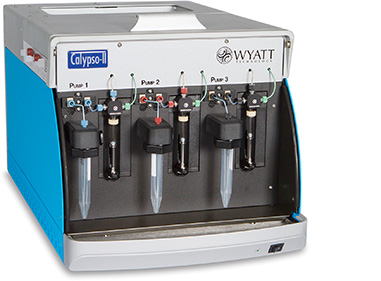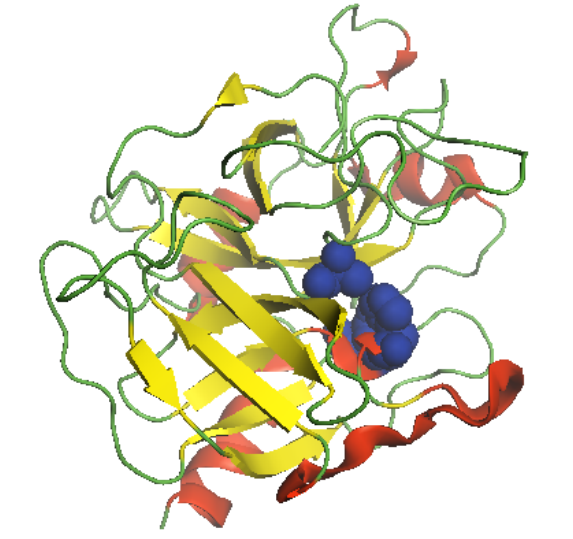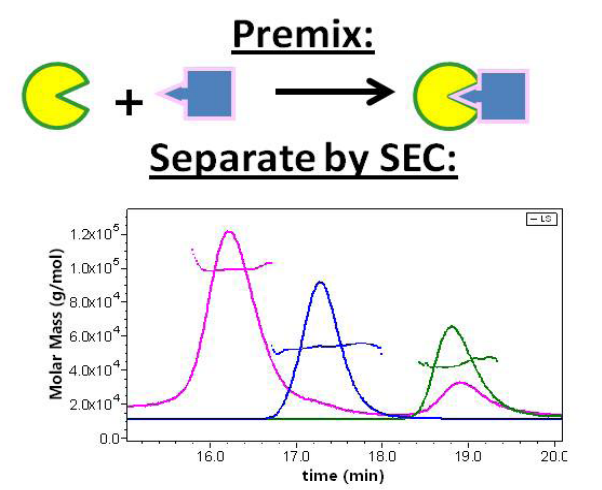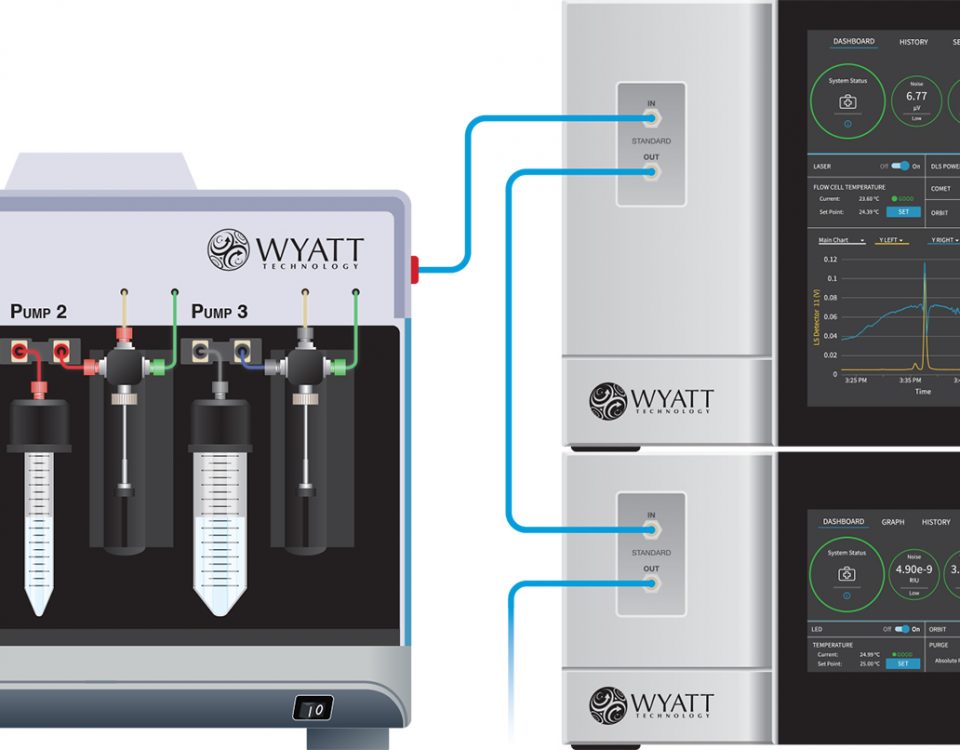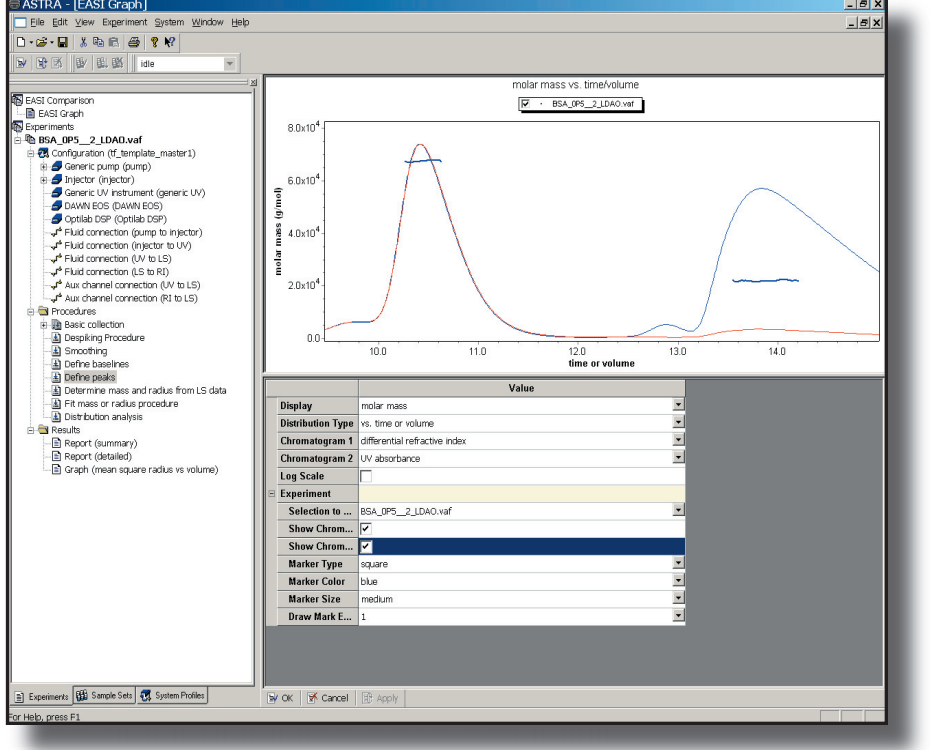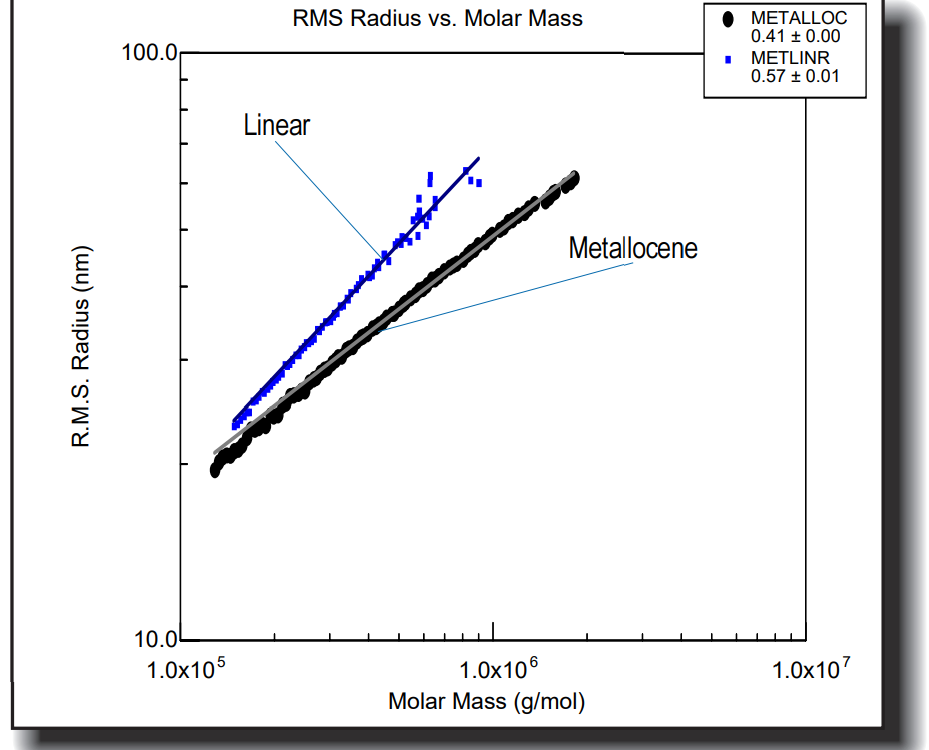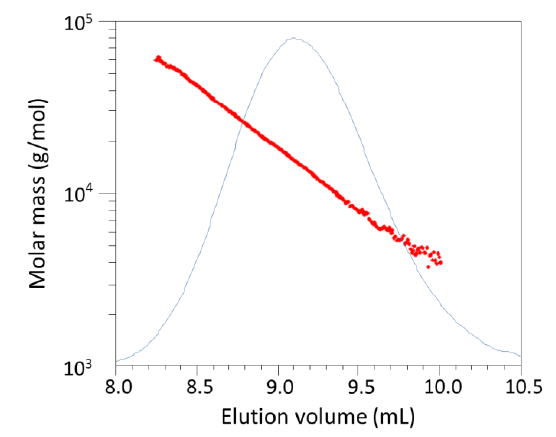With the Calypso system, a MALS detector (e.g. DAWN or miniDAWN) and an on‐line concentration detector (usually a dRI or UV absorption detector), A2 measurements are automated for rapid turnover, minimal operator effort and high reproducibility. Learn more in our application note.
Analysis of purity and demonstration of lot to lot comparability is essential throughout the drug development process. A common approach to evaluate the relative levels of molecular weight forms is to perform analytical size exclusion chromatography (SEC) in combination with multi-angle light scattering (MALS) and absorbance (UV) and/or refractive index (RI) concentration detectors. Learn more in our application note.
Antithrombin III forms a covalent bond with the catalytic serine of several proteases involved in the coagulation cascade, and the rate of this reaction can increase up to 1000x in the presence of certain macromolecules. In this application note, we determine the second-order rate constant for the covalent association of thrombin-α (Thr) and antithrombin III (AT) by Composition Gradient Multi-Angle Light Scattering (CG-MALS).
Antibody-antigen binding, hormone-receptor interactions, and many other common biomolecular interactions occur at stoichiometries other than 1:1. The Wyatt Calypso system utilizes composition-gradient multi-angle light scattering (CG-MALS) to determine both the affinity and binding stoichiometry for macromolecules in solution with no need for immobilization or tagging, which may influence the interaction. Learn more in our application note.
Multi-angle light scattering (MALS) is a powerful tool for quantifying multiple types of protein-protein interactions. In this application note, we probe the interactions between three proteins: human thrombin-α (Thr), antithrombin III (AT), and an anti-thrombin monoclonal antibody to evaluate whether the antibody can recognize AT-inactivated Thr. Read our application note to learn more.
Quantification of the kinetic rates of protein association, dissociation, and aggregation is an essential factor in understanding and ultimately manipulating these phenomena. Multiangle, static light scattering (MALS) is a widespread technology for characterizing macromolecules in solution, providing an absolute measure of molar mass and size. Learn more in our application note.
The characterization of therapeutic protein formulations is essential for the development of novel biopharmaceuticals. In particular, solution viscosity and colloidal stability may be adversely impacted by attractive self-interactions among protein molecules. In this study, we quantified the self-association affinity and stoichiometry of three antibody formulations (mAbs A, B, and C) in their corresponding formulation buffers using composition-gradient multi-angle light scattering (CG-MALS) automated by the Wyatt Calypso®.
Proteins—especially monoclonal antibodies (MABs)— have become increasingly important in pharmaceutical work. However, there are some important differences between conventional, chemically-synthesized drugs and proteins. Asymmetrical flow field-flow fractionation (AF4) is a well established method for sizing and quantifying different aggregate species in protein formulations. A major advantage of AF4 is the use of the formulation buffer of the protein as the mobile phase. Learn more by reading our application note.
The concentration of detergent in membrane protein purifi cations can have a critical role on protein stability, function, and crystallization. We have developed a method for the determination of detergent concentration based on measuring the refractive index of the detergent solution with an Optilab RI instrument. Learn more by reading our application note.
Analysis of Polycarbonate urethanes (PCU’s) are a class of biocompatible polyurethanes that show great promise for use in orthopaedic implants, such as artificial hips. The molar mass distribution of a PCU resin was characterized using size exclusion chromatography (SEC) in N,N-dimethylacetamide (DMAc) containing 0.1-M lithium bromide. Learn more in our application note.
In order to characterize polyolefins by liquid chromatography, a high temperature chromatograph must be used in order to solubilize the polymer. Temperatures typically range from 135°-145°C, and the solvent of choice is trichlorobenzene (TCB). With conditions this aggressive, the choice of detectors is critical. In this application note we show the power of results obtained from a High Temperature miniDAWN (HTmD) for a metallocene catalyst.
Polyurethane is a common polymer which is sometimes difficult to analyze. Typically, polyurethanes are analyzed by Gel Permeation Chromatography (GPC) using polymer standards and extensive column calibration. But, besides being tedious, column calibration means that the resulting answers will be relative and not absolute. A far more effective means of characterizing polyurethanes involves adding a DAWN or miniDAWN detector to your GPC. Learn more in our application note.

